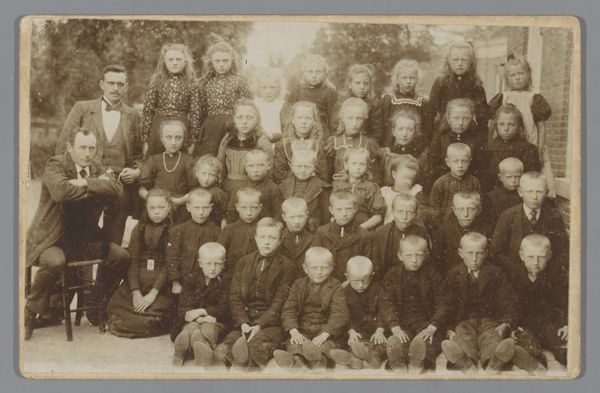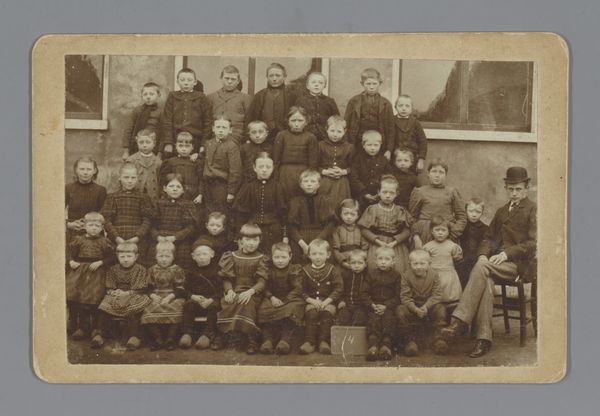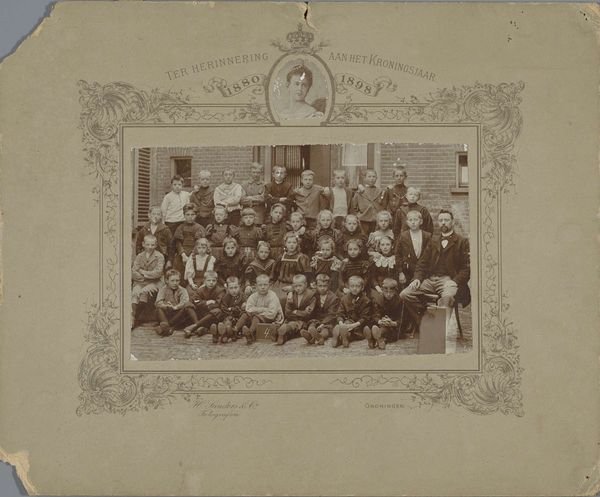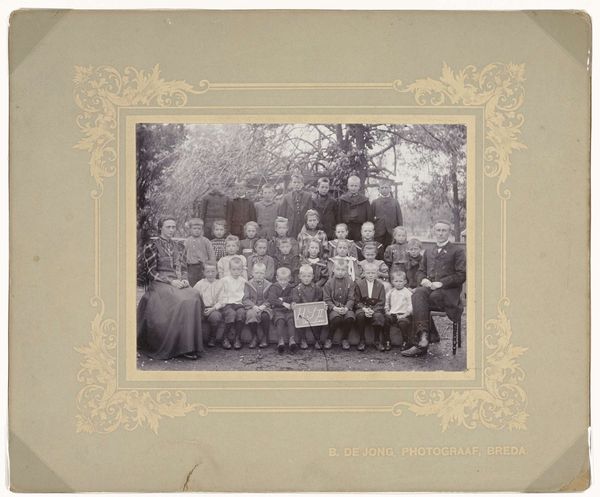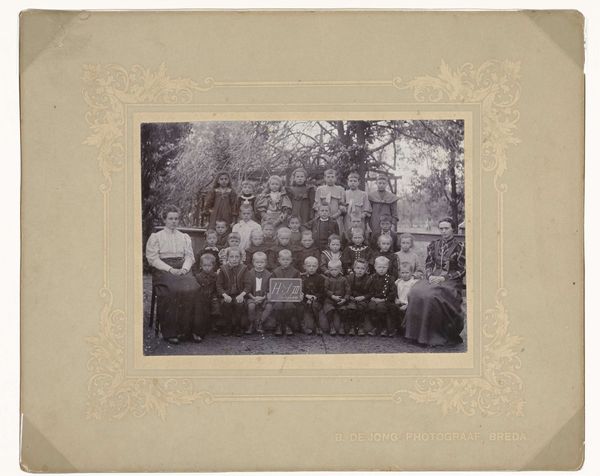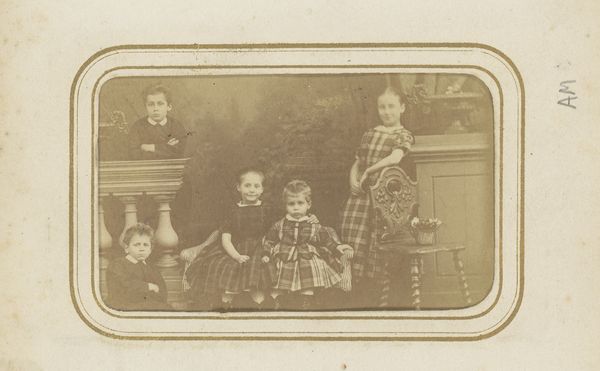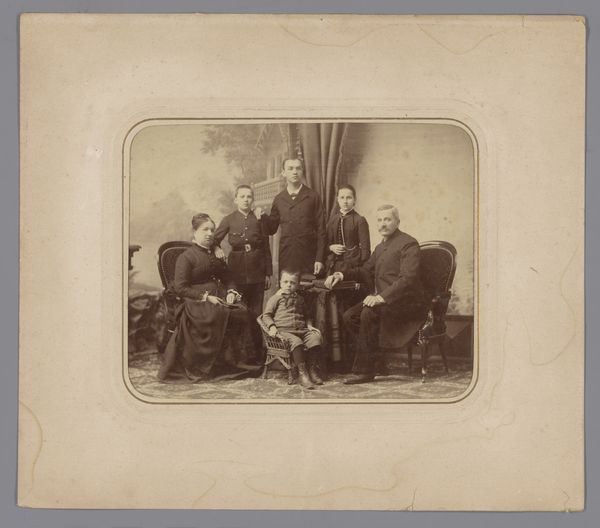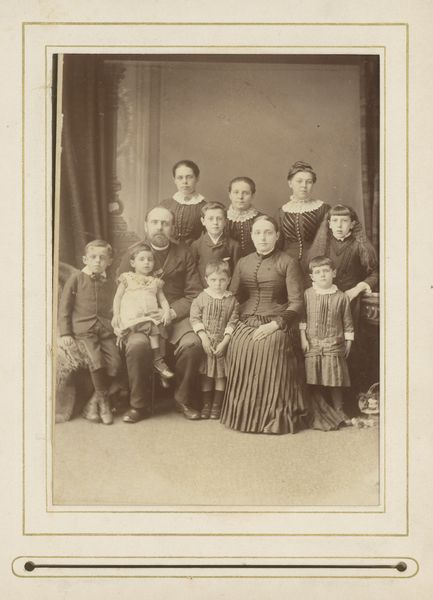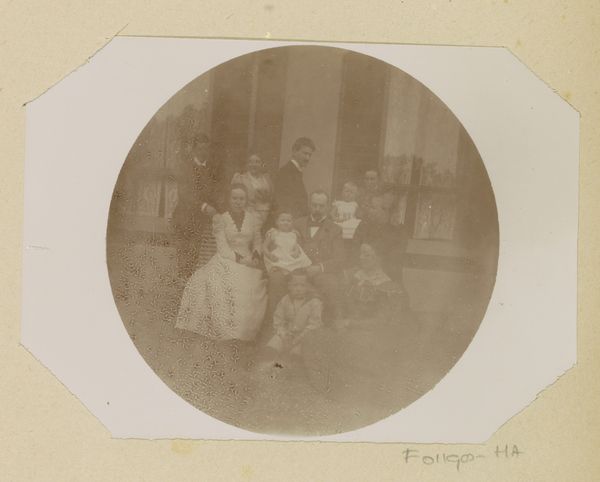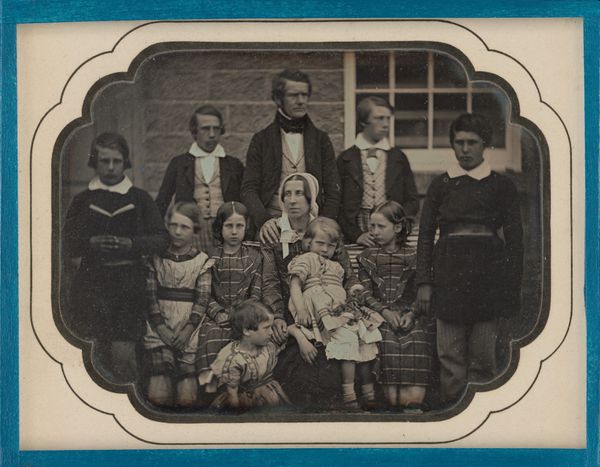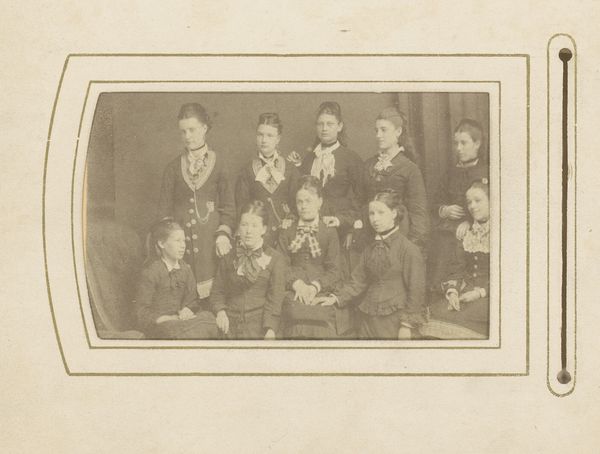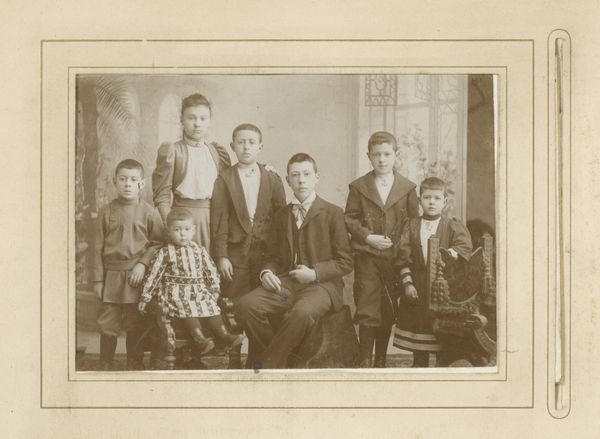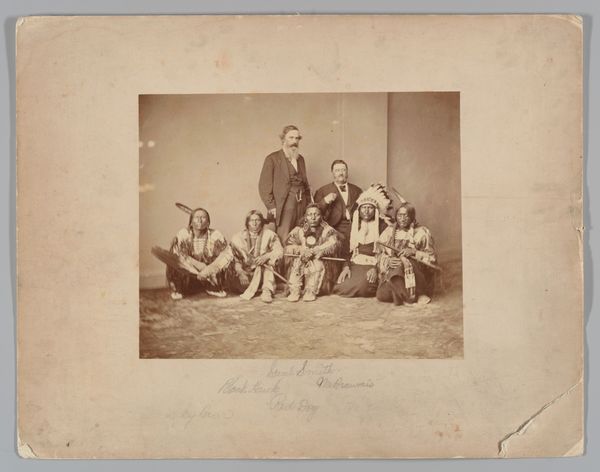
photography
#
portrait
#
dutch-golden-age
#
photography
#
genre-painting
Dimensions: height 101 mm, width 160 mm, height 195 mm, width 238 mm
Copyright: Rijks Museum: Open Domain
Editor: This is "Klassenfoto, Leeuwarden (?)," a photograph taken sometime between 1903 and 1920 by Joseph Dwinger. It feels… staged, almost unnaturally so. Everyone's staring straight ahead. What strikes you when you look at this photo? Curator: It is striking, isn’t it? I’m immediately drawn to the careful arrangement of the subjects, their posture, but also, the fact that it’s sepia. Consider sepia, it inherently adds a layer of cultural memory, associating it with the past, with simpler times or maybe harder times. It turns them all into an almost uniform mass. Is it about unity, control, or perhaps the predetermination of fate, their places already etched? Editor: So you're saying the medium itself communicates a specific feeling? Curator: Precisely. It’s more than just a technical choice; the sepia tone speaks to historical weight. Note how it almost removes individuality to create a uniform surface on which all students are similar, reflecting the societal emphasis on conformity and national identity building during the early 20th century. Observe their garments; what repetitive messages are being spread? Editor: Most are plainly dressed but, now that you mention it, the teacher wears a darker, finer suit that subtly contrasts him from the rest. A visual separation to represent authority? Curator: It’s possible. He represents stability and, more importantly, continuity, which goes along with cultural identity being maintained across the image’s subjects and the photograph itself. How does the teacher's position in the image affect the overall tone? Editor: By literally standing above the rest of the group he asserts dominance, implying his greater role in society, right? I hadn't noticed how much is communicated in a single portrait! Curator: Indeed! Consider it a coded story, where symbols act as language. These portraits encapsulate cultural ideals. Food for thought!
Comments
No comments
Be the first to comment and join the conversation on the ultimate creative platform.
